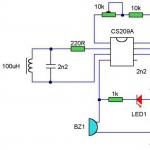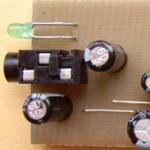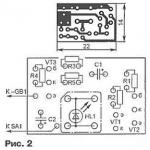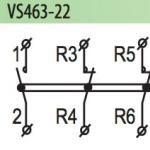Transparent hard polymer plastic, or polycarbonate, is widely used in various fields activities, in particular in construction and agriculture. Today we will tell you how to remove the film from polycarbonate.
Why film is needed
Monolithic and cellular polycarbonate is characterized by good light transmission, which is important for the growth and development of fruit and vegetable crops grown in greenhouses. vegetable crops. Absence or deficiency solar lighting negatively affects fruiting, and sudden changes in temperature lead to the death of plants. Sheathing made of polymer plastic maintains a favorable microclimate inside the greenhouse.
Many gardeners are interested in what purpose a special protective coating on the surface of the canvas has. It should be noted that a variety of chips, microcracks, scratches, dents and other mechanical damage lead to deterioration or complete loss of the original physical properties and material qualities. It is not advisable to use such a canvas for sheathing a greenhouse.
The light transmission of polycarbonate is considered one of the main parameters
A special protective coating of the surface is necessary during loading and unloading operations, transportation and installation of polymer plastic.
High-quality cellular polycarbonate must be protected on both sides. In this case, one side is covered with a transparent colorless film, and the other side is colored. Colored polyethylene indicates the UV protected side.
Responsible manufacturers put the following marking on the film:
- title and specifications material;
- information about the manufacturer and trade mark;
- recommendations for the installation of polymer plastic.
Video "Protective film on polycarbonate"
This video will show you how to properly remove the film from cellular polycarbonate:
Coating on the inside
Remove protective layer from inside sheet is needed at the end of the installation of polymer plastic. If construction works are held on a hot summer day, you should hurry with the removal protective coating. Otherwise, the polyethylene will “stick” to the canvas.
Protective film removed from the edge to the center, while the movements should be neat and unhurried. Scraping the special coating with various tools, fixtures, and even nails is prohibited - there is a high risk of damaging the integrity of the surface of the material.
If the film is still stuck to the polymer plastic web, you can apply one of folk methods: wet the leaf surface warm water with the addition of liquid baby soap or dishwashing detergent, leave for a few minutes, remove the protective layer with a soft foam sponge.
Coating on the outside
The back side of cellular polycarbonate can have a colorless or colored film. A colorless special coating indicates that this sheet of polymer plastic does not have UV protection. Accordingly, the service life of such material is no more than 2-3 years.
 If with outside transparent color film means this polycarbonate sheet has no UV protection
If with outside transparent color film means this polycarbonate sheet has no UV protection Be sure to remove the protective layer. Polyethylene residues will damage the UV protection layer and reduce the technical qualities of the polycarbonate.
Working with sheets of cellular polycarbonate is easy if you follow the advice of more experienced farmers and the recommendations of the manufacturer.
By its nature, polycarbonate is unstable to ultraviolet rays (UV), therefore, to ensure the durability of polycarbonate sheets, manufacturers cover them with a protective UV layer and introduce special additives into the polymer mass.
The second threat to polycarbonate sheets is the usual dust that enters the mass in production. The smallest dust particles, perhaps even invisible to the human eye, can cause serious "burns" of the sheets and lead to a reduction in the life of the material.
You can draw an analogy with the melting of snow in the spring. Dirty snow melts faster, as the grains of sand in the snow mass absorb the heat of the sun intensely. So it is with polycarbonate: when heated in the sun, dust particles that get into the polymer mass during production literally burn through the polycarbonate from the inside. As a result, the sheet “opens”, bursts, gradually loses its aesthetic appearance, bearing capacity and tightness.
Since polycarbonate honeycomb sheets are mostly used for building outdoor structures (for the construction of greenhouses, sheds and canopies, translucent roofs, etc.), it is very important to carefully choose a supplier who can ensure durability already at the production stage. consumer properties its products. Including cleanliness of production.
Cleanliness is the key to maintaining the necessary properties of polycarbonate sheets.
In the production of cellular polycarbonate, cleanliness should always reign as in a surgical room. This requirement is quite practical value- the smallest particles of dirt that got into the polycarbonate mass during production not only spoil the outer sheet, but also significantly reduce its durability. Dust particles can be so small that they cannot be seen with the naked eye, and the damage caused by the carelessness of the manufacturer can be serious.
The raw material for the production of honeycomb sheets is granulated polycarbonate. In order to prevent dust, dirt, or moisture from getting into it, the granules are carefully packed in multi-layer bags during transportation from the production of raw materials to processing enterprises. On the territory of the processor, raw materials must be stored in special tanks.
Before the start of the production cycle, the granules are cleaned of dust and moisture in special centrifuges. Despite all these precautions, in a well-organized production, a lot of attention is paid to cleanliness in the shops. The main sources of dust in production are dirty floors and dust on equipment. That's why wet cleaning- an integral part of production process, which is repeatedly performed during the entire work shift.
But this is not enough - to ensure cleanliness, a competent manufacturer arranges a special anti-dust floor already at the stage of construction of the workshop, much attention is paid to the functioning of filters supply ventilation and many other activities related to the cleanliness of production.
The obligation to maintain cleanliness lies not only with the manufacturer, but also with the builders who install polycarbonate sheets. If polycarbonate sheets are stored under open sky, then under such storage conditions there is a danger that the polycarbonate sheet will turn out to be the side turned to the sun, on which there is no UV protection (in the case of sheets with one-sided UV protection). Subsequently, this will inevitably lead to a decrease in its performance characteristics. On the other hand, there is a danger that in hot weather, under the influence of the sun, the protective film will firmly adhere to the sheet, which in turn will make it difficult to remove the protective film from the surface of the plate.
But the main problem is the storage of polycarbonate sheets with unprotected ends. Open ends contribute to the ingress of dust, dirt, moisture into the cells of the polycarbonate plate. These factors contribute to a decrease in the durability of polycarbonate, jeopardizing its strength. So storing sheets on the street is highly undesirable.
During the installation process (if it is carried out in accordance with all the rules), the builders will close the ends of the polycarbonate panels, and the translucent structures made of this wonderful material will delight the owners for many years.
To summarize: - The reliability of a structure coated with polycarbonate sheets largely depends on the conditions under which they were manufactured. A decrease in the performance of polycarbonate sheets, and hence the reliability of the entire structure, can occur due to the fault of the smallest dust particles, which none of the consumers usually think about.
Construction errors when using cellular polycarbonate
All construction errors can be conditionally divided into design errors and errors associated with improper use of the material.
Let us dwell in more detail on the errors associated with the incorrect use of the sheet.
Mistake #1. The sheet is fixed to the sun with a side that does not contain surface UV protection. As a result, the leaf will turn yellow. Council in this case simple: do not remove the protective film with the marking before installation. Otherwise, you can simply confuse the parties, because. The presence or absence of UV protection cannot be determined by eye.
Mistake #2. Special thermal washers are not used. Simple self-tapping screws can damage the sheet during thermal expansion, and dirt will accumulate in places of damage. Special washers are needed in order to close the mounting hole from moisture and dirt and prevent them from entering the cells.
Mistake #3 . The ends of the cellular polycarbonate sheet are not closed (or incorrectly closed). If the ends are not closed, then the sheet becomes dirty, loses its appearance and light-transmitting properties. There is a second option: the ends are closed “tightly” and the condensate that forms in the honeycombs as a result of temperature changes does not go outside. It is optimal to close the ends with a special perforated tape, and then with a profile that provides protection against dust ingress, but does not prevent moisture from escaping.
Mistake #4. Incorrect application of the sheet class. All sheets of cellular polycarbonate are divided into classes: sheets for greenhouses (4 and 6 mm) and sheets for construction (from 8 mm). For example, you can often find that in the construction of stopping complexes, a sheet 4 mm thick is used, and it is lightweight. Such a sheet may not withstand the snow load, and people may suffer as a result of such a construction error. The same applies to translucent roofs and small architectural forms.
Many users complain about the clouding of polycarbonate over time, even when contacting professional installers, does the material sometimes turn yellow? Who's guilty?
Cellular polycarbonate turns yellow (cloudy) for several reasons: external environment(in particular the sun); low quality of raw materials; poor organization of production, lack of cleanliness in production; a high percentage of the use of secondary raw materials, its low quality and purity; violation of the extrusion modes of a sheet of cellular polycarbonate.
Slow down the process of degradation of cellular polycarbonate under the influence of the sun. Surface UV protection (applied by co-extrusion). The presence of these components must be indicated in the marking and passport for a sheet of cellular polycarbonate.
Let us dwell in more detail on the cause of turbidity of cellular polycarbonate as a result of a violation of the sheet extrusion modes during production. Extruding a sheet of cellular polycarbonate - difficult process, for which it is very important to maintain the same parameters, including a constant extrusion temperature. Here the leading role is played by the class of equipment installed in the production. If the accuracy class of the equipment is low, then the fluctuation of its parameters will occur in waves. The sheet will be extruded over an extended temperature range and underforming of the polymer may be observed. And as a result: a cloudy sheet, with great internal tension. The accuracy class of equipment is an indicator that shows how equipment can perform its task in a given range. Accordingly, on some equipment it is possible to produce spaceship, and on some just a clay pot
Thus, in order to avoid clouding of cellular polycarbonate, you need to choose a sheet produced on Italian or German equipment with a high accuracy class.
How to deal with moisture inside the cells?
For the free exit of condensate from the cells during installation, they should be oriented in the direction of the slope. It is also necessary to use the correct perforated tape and profile, which will allow moisture to escape.
After buying polycarbonate, many people ask themselves the question - is it necessary to peel off the film from it after installation, because with it the design looks more colorful and attractive? You can see very colorful film coverings on some areas of private houses, which depict fruits, vegetables or other objects. When a person assembles a structure from this material for the first time, he is thrown into doubt by her beautiful appearance - to remove the film or leave it for decoration? On the one hand, the film is pleasing to the eye, and on the other, whether there will be any harm from it. So the correct answer to this question is, of course, it is necessary, otherwise some problems may arise with the material later. By the way, if you need polycarbonate, follow this link http://unistframe.ru/catalog/monolitnyy-polikarbonat/.
The film on the sheets is exclusively for transport, it protects their surface during transportation and storage in a warehouse. When the film has already been purchased and installed in its place, it is no longer needed. Sometimes people who are not very knowledgeable in this matter take the transport protective layer for a film designed to protect the sheet from ultraviolet radiation. For reference, the ultraviolet-retaining layer is transparent, very hard to see with the naked eye and very difficult to erase. Therefore, you should not worry that along with the protective film you will remove the protection from UV rays.
Cellular or solid polycarbonate on the inside and outside
Cellular or monolithic polycarbonate has an outer surface and an inner one. On the outside, as a rule, the name is applied trademark, manufacturer, product warranty and UV protection available. This side is always colored, sometimes even decorated with drawings.
If you do not remove this colored film, the dark areas of the pattern applied to it will firmly stick to polycarbonate, dismantling the film, covered with tatters, darkened and lost its entire appearance, becomes quite problematic. In this situation, along with the protective film, sun protection can also be dismantled, the film will firmly stick to it and damage it. Besides, in winter period it will slow down the snow, while on a clean surface it would easily come off.
Do I need to remove the film from the polycarbonate from the inside of the sheet? Here, the coating is most often completely transparent, but it also needs to be removed, since the film traps light. If you leave it, then in a couple of years it will disrupt the appearance of the product.
What is the difference between standard polycarbonate and lightweight polycarbonate. Want to install on a pitched roof?
The thickness of the ribs of the lightweight sheet is less and load bearing capacity below. On roof structures subjected to snow loads, it is necessary to reduce the pitch of the batten.
How can scratches be removed from polycarbonate?
Minor scratches can be removed or made less noticeable by polishing or with a special polishing paste.
Which is better to choose polycarbonate for a greenhouse? Do you need UV protection? What sheet thickness should be used?
Co-extrusion UV protection is necessary to keep polycarbonate clear and durable for a long time. Without such protection, sheets are destroyed, as a rule, within 1-2 years. As for the thickness of the sheet, it all depends on the shape and size. Typically, polycarbonate is used with a thickness of 4mm to 8mm.
How to properly store cellular polycarbonate
Preferably kept inside enclosed space . When storing outdoors, care should be taken to cover not passing Sun rays (cardboard, wooden box etc.). To prevent the upper slabs from being blown away by the wind, cargo is placed on top, for example, heavy boards. The boards must not be coated with PVC. Slabs should be stored on a pallet (slabs must not touch the ground).
Explain the thermal expansion of polycarbonate.
Coefficient of linear thermal expansion for polycarbonate 7.10-5 K-1 = 0.00007 m/m.°С = 0.07 mm/m.°С, that is, when the temperature changes by 1ºС, each linear meter of the sheet decreases or increases in all directions by 0.07 mm.
Calculation example: when installing a cellular polycarbonate sheet in a rigid structure 10 meters long and with a temperature difference during the year of middle lane Russia 70 ° C (from -30 ° C to + 40 ° C) the gap between the sheet and the structure is 49 mm (0.07x10x70 \u003d 49 mm). The minimum tolerance recommended for cellular polycarbonate sheets is 3.5 mm for each meter of length or width - the calculation is based on a temperature difference of 50 ° C. The diameter of the holes for fixing bolts or screws must be 1.5 times larger than the diameter of the bolt.
I want to mount the sheets horizontally.
Mount plates cellular polycarbonate follows the direction of the longitudinal stiffeners, either vertically or along the slope of the pavement, but not horizontal.
Do I need to remove the top film from polycarbonate sheets?
Plates cellular polycarbonate covered plastic wrap to protect against contamination and mechanical damage that may occur during shipment, transportation and assembly. The film should be left on the plate until the end of assembly and be sure to remove upon completion of work.
How and how to cut cellular polycarbonate?
Cutting is done with circular saw or electric jigsaw with teeth at an angle close to 30°. Chips that are formed during the saw cutting process should be thoroughly cleaned with a jet of air under pressure or in any other way available. During cutting, the honeycomb polycarbonate plate should be pressed firmly against the table surface to prevent its vibration or shift. If it is necessary to cut plates of insignificant thickness (10 mm and below), you can use a construction knife.
Any advice on what sealant to use?
100% silicone sealant. Important! sealant without acrylic, ammonia, antifungal or other additives that can damage polycarbonate. Do not use mounting foam. It leads to deformation of the coating.
How are different thicknesses of cellular polycarbonate bent?
Minimum slab bending radii.
How to clean polycarbonate after winter?
- pour the plates with warm water;
- use a soft brush (cloth) and warm soapy water when washing;
- do not use a knife or other sharp objects;
- wash off the soap running water and wipe it off so that no stains remain.
What are the installation errors?
- Incorrect orientation in order to save material, especially when cutting polycarbonate panels for spherical and broken roofs. The panels should be oriented in the direction of the slope or bend.
- Improper sealing in order to save or lack of it.
- In case of vertical glazing, if required, the fixing of the panels in the transverse direction should be cut. It is impossible to fasten the panels “through” as over time or immediately, leaks will appear at the fastening points.
- It is necessary to correctly select the thickness of the material corresponding to the purpose of the structure, following the recommendations of the manufacturer and specialists.
- Non-observance of tolerances for thermal expansion.
- Failure to comply with the conditions for fastening the edges of the panels.
How to cut cellular polycarbonate?
Sheets can be cut easily and accurately with standard equipment ( a circular saw, hand saw or a hacksaw). The protective film must remain on the sheets when cutting. Sawdust should be blown out of the channels with compressed air.
Which side should the protective film be placed on?
During installation, the sheets must be placed with the side with the protective film containing the marking facing out. It is from this side that a protective layer from UV radiation is applied. It is forbidden to walk directly on the sheets.
What gap should be left when fastening the sheet with a screw connection?
When fastening panels with a screw connection or a self-tapping screw, the diameter of the hole D1 must be 2 mm larger than the diameter of the screw or self-tapping screw D2. The screws do not need to be tightened, leave a gap for free play.
What clearance should be left for thermal expansion?
Due to the fact that polycarbonate expands in size when heated, it is necessary to leave gaps for thermal expansion. For a transparent sheet, the gap should be 2-3 mm, for a colored sheet - 3-4 mm.




